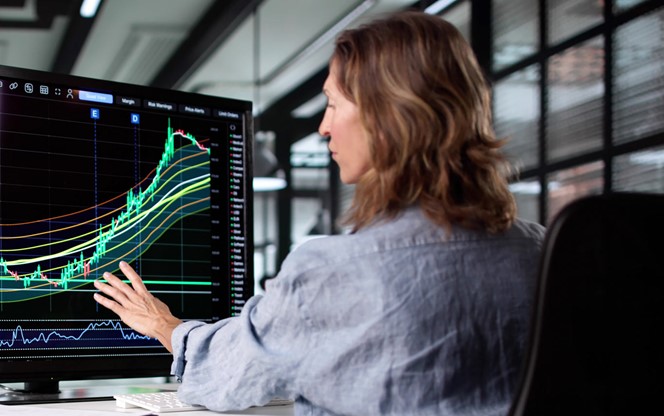Reports and Surveys | November 19, 2020
Q3 Investment Outlook Update: The Fed’s FAIT Accompli
Segal Marco Advisors’ Q3 update to the 2020 Investment Outlook helps you put recent market developments in perspective.
Learn more about our global macroeconomic views and near-term performance expectations for specific asset classes.
Overview
A fait accompli is a fact that has been accomplished. That French expression is appropriate now, as FAIT also stands for Flexible Average Inflation Targeting, which the U.S. Fed implemented in 2020.
FAIT was intended to communicate that the Fed’s intent to keep interest rates low for long is a done deal (accompli). As a growing chorus of market watchers and prognosticators sang the siren song of “all this stimulus has to be inflationary,” the U.S. central bank wanted it to be crystal clear that while the 2 percent target remains intact, overshoots would not cause Chairman Powell’s Low Rate Fed Club Band to stop playing that tune.
In keeping with this musical theme and paying tribute to the great and now late Eddie Van Halen, they are telling investors concerned about sharks in the water that they can “jump, go ahead and jump.” And, for the most part, U.S. risk assets, from credit to equity, have reflected a sense of calm that feels quite inconsistent with the uncertainty of an economy still suffering from the impact of the pandemic and an election with final tallies in the Senate unlikely to be unknown until mid-January.
Unprecedented uncertainty
Historically, other oft-repeated expressions from market watchers have been “this time is different” and “we are living with unprecedented uncertainty.” Well, today they are finally correct.
As 2020 comes to a close, we can divide the environment into three categories: macro dynamics, market conditions, and longer-term underpinnings. The macro dynamic uncertainty includes a possible third wave of COVID-19 and the global expansion of deaths and hospitalizations from the outbreak, a new incoming administration with the potential for changes in tax, foreign affairs and regulatory policy, massive levels of unemployment with political squabbling overwhelming the need for additional fiscal stimulus and the threat of social unrest driven by polarization.
Market conditions that are at least unusual involve higher-than-normal valuations, a delinking of historical relationships between value and growth, and large and small, and a concentration in the U.S. stock market from a handful of technology stocks that is above all-time highs. These factors exist against a backdrop of dramatic impacts from global climate change, a massive number of baby boomers looking to exit the workforce and a level of wealth disparity that, for the U.S., rivals the times of the robber barons in the early 20th century. All of this is certainly enough to make an investor want to ignore the Fed and run for cover.
Reasons for optimism
Yet there are reasons for the optimism that the capital markets seem to be factoring into our future circumstances. Needed stimulus seems certain — only the magnitude, timing and specifics are in question. Sometime in the next few weeks the U.S. election will be behind us, and while there will be many disappointed by the outcome, we will have a result despite posturing otherwise.
The massive global effort to find medical answers, preventative and therapeutic treatments, and vaccines will pay dividends at some point, and there will be an opening up, of economies, which, if there is any poetic justice, will mostly coincide with the renewal of spring.
There is an opportunity now to establish a bipartisan approach to rebuilding U.S. infrastructure with a slant towards renewable energy and reduced carbon impacts. It is a defining moment that can rival the post-WWII rebuilding that set the stage for long, strong global growth, with the marriage of labor and technology raising incomes and standards of living with greater equality.
Many things will be different and some will most likely remain the same. Business travel and office utilization will be re-assessed even when this pandemic is behind us.
The divisiveness and partisanship that manifests itself in many ways around the globe is not going to disappear overnight regardless of the U.S. election result. Global supply chains are set to undergo changes to protect basic industry, but the idea of onshoring replacing offshoring would be a decades-long process and is unlikely to be fully embraced by a principally capitalistic democratic developed world. The ascension of China on the world stage has somewhat ironically been advanced as a result of the pandemic due to their more rapid recovery and stronger baseline GDP growth rates.
The European Union has, in order to avoid economic collapse, become stronger in terms of the application of policy tools and may arise from these ashes as a more formidable global player. The application of technology to communications and commerce has been a substantial support to our ability to survive in this emergency, and the advent of telemedicine, e-commerce and virtual meetings will not simply reverse course when the “all-clear” siren sounds.
Our forecast for the impact on capital markets
The capital market summary of these various forces over the next 18 months, with a base case that a widely available medical solution (although imperfect) will take hold during 2021, is that the U.S. equity market will, with volatility, hobble along to be about “normal” in terms of what the combination of modest growth, low inflation and normalized risk premiums should provide.
We don’t expect some sort of magic above long-term trend in economic growth to propel prices outside of the range of mid-single digits. We maintain a slight preference for the U.S. over developed non-U.S. equity markets as those economies just don’t have the near-term prospects for growth and their valuations are not at a compelling level.
Emerging equity is attractive over the long term, but these economies have substantial hurdles to any sort of “off to the races” results in the next year or so in our view. In the U.S. we still maintain a small preference for large cap over small, believing that the desire for the stability of the former will provide a potential advantage.
Clearly one has to be concerned about the concentration in large cap growth driven by a handful of tech-directed companies (noting how they are changing that descriptor in some cases), but there appear to be only modest challenges to that dominance at this point.
In any case, returns from equity markets in the 6 to 8 percent range, while not sounding exciting on the face of it, in a very low inflationary and interest rate environment still seem to be the best song on the album.
With sovereign yields in very low-to-negative territory for much of the developed world, it is difficult to see a path where these investments have much, if any, attraction over our forecast period.
The credit segments of fixed income, including high yield, bank loans and structured credit, have snapped back dramatically of late and we see, given the promised support of the Fed, investors gaining the yield advantage with only modest risk from default.
That said, we prefer the higher-quality end of the spectrum as circumstances could change rapidly. We also have some concerns that the stretch for yield of any sort via distressed exposure must be carefully weighed against the current apparent frenzy to raise capital at high fees and, in many cases, where expertise is questionable.
In our Alternatives buckets we don’t see much that gets us excitedly out on the dance floor, but there are, as always, pockets of opportunities. For example, in hedge fund land, the increased volatility creates an environment where nimble long/short managers can benefit.
Private Equity will likely see current valuations struggle with a lag to public equities, but there will be attractive buys within those challenges. Likewise for Real Estate, where there will be haves and have nots as the pandemic shakes out markets and segments. So there will be some deals to be made for those who can differentiate between what has bottomed out and what has not.
For most commodity-based investments and other hard assets it will take some emergence of sustained global growth or other exogenous factors before we’ll see their recovery. That is surely on the horizon, but it does seem to be somewhat outside of our 12–18-month planning period.
Some sobering news
There is some sobering news in this generally positive perspective on capital markets for at least the next 12 to 18 months. With the anchor of a fixed income portfolio likely to be solidly tethered to a number between 1 and 2 percent, expectations for investors’ total returns, whether institutions or individuals, will need to continue to be moderate.
This unwelcome story cannot be tagged to be the result of the pandemic, but rather has been part of the glide path of the developed world for several decades.
These economies are mature and they are very large. The challenge of moving the GDP growth needle for the U.S., Europe and Japan is daunting in an environment where there is some cooperative motivation, much less now.
As long as our primary drivers are to make our “side” win in the short term, it is likely that we will all lose in the long term.
We have said this many times, but long-term economic growth comes from the support pillars of increases in labor force participation and productivity per person in the labor force. Right now the Chinese, and much of Asia, understand this and are laser focused on both sides of this equation.
The “West” should “roll with the punches and get to what’s real” if the goal is 3+ percent growth and 8+ percent market returns over the long run. Today, (thank you Van Halen) we have our “backs up against the record machine,” and partisanship and isolationism won’t change that.
We have spent the last eight months throwing needed stimulus to stem the crisis of the pandemic. If we don’t now apply creative intelligence to craft long-term solutions, the next crisis may be much worse.
See more insights

Numbers Retirement Plan Sponsors Need to Know for 2026

Markets Commentary: Third Quarter 2025


